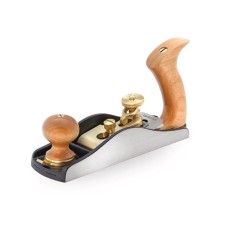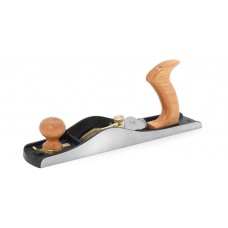Bench Planes Low Angle

Redesigned classics meet higher quality standards for the modern woodworker. Then and Now: (Left) The original Stanley 62 Low Angle Jack Plane compared to our much heftier Lie-Nielsen version (right).
Low angle planes are versatile, uncomplicated tools that will do a great job on both end and long grain. Lighter than conventional Bench Planes, these planes have a thicker blade and no chipbreaker, making them easier to set up. Instead of a separate frog, the plane body and blade support are a single casting. Mouth opening is easy to adjust.
The bevel-up blade makes the cutting angle easy to adjust. A powerful technique for enhancing the performance of low angle planes is simply to hone an angle higher than 25° on the blade (for example, a 33° angle makes an effective cutting angle of 45°; a 38° angle equals a 50° cutting angle). This is easily done by honing a small secondary bevel - no need to alter the entire bevel. Higher cutting angles will give excellent results in difficult or highly figured woods.
Their greatest asset is a 12o bed angle and thick blades, thus reducing vibation to pretty much zero, remenber a vibrating blade does not cut.
Because of their simplicity, these are great tools for beginners.
Low Angle Jack Plane No 62 Set
Availability : Pre-Order 21-42 DAYS
AUD $649.00 AUD $708.00 Ex Tax: AUD $590.00


